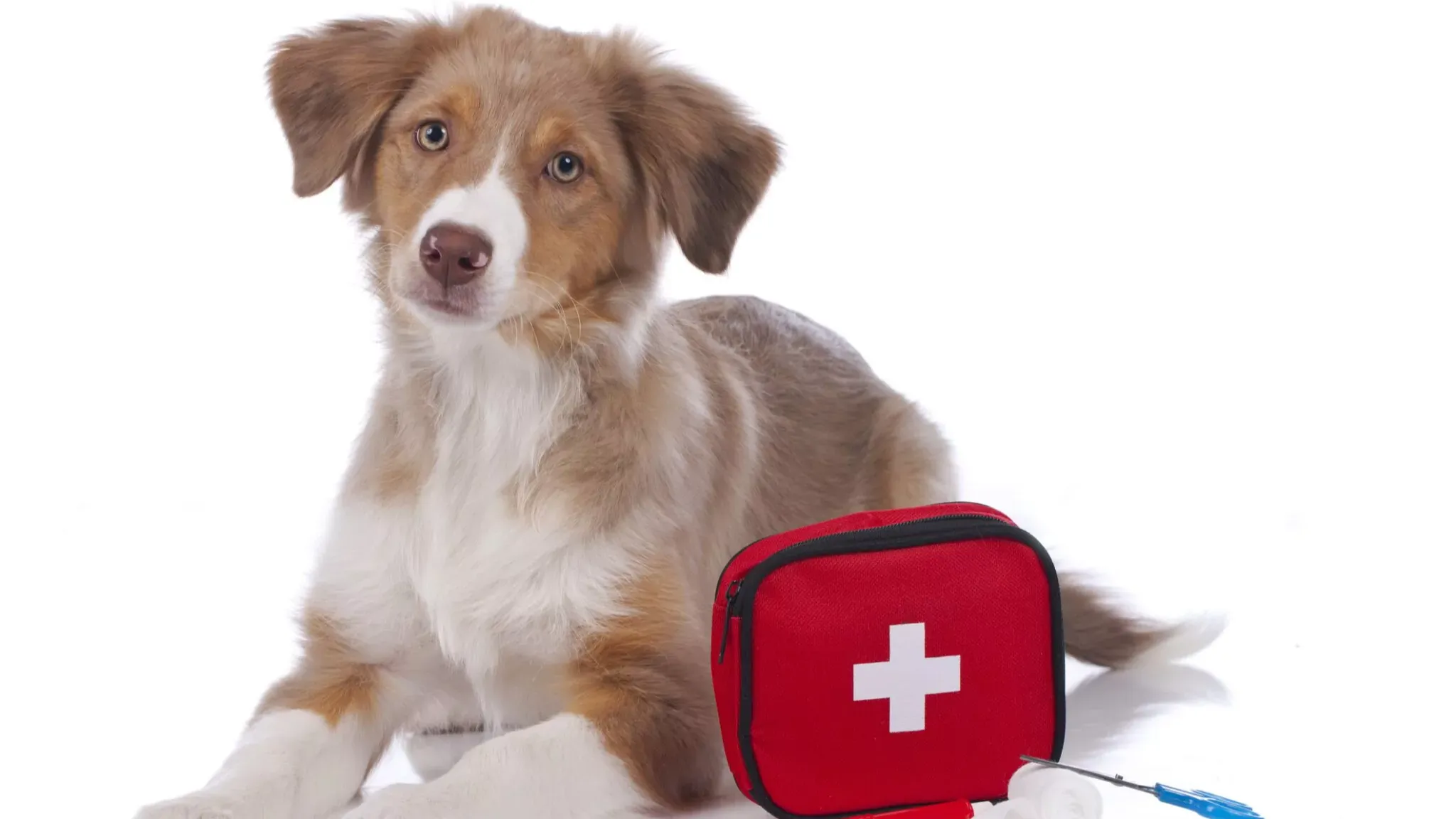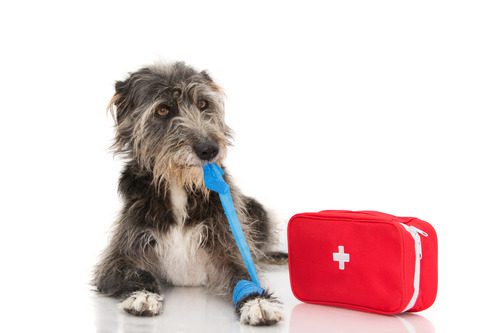Everything You Need in Your Canine First Aid Kit
Nov 01, 2025
As a dog owner, being prepared for emergencies is one of the most important steps you can take to protect your furry companion. Accidents happen, from minor cuts and scrapes to sudden illness or injuries during play. While veterinarians are always the best resource, having a well-stocked canine first aid kit ensures you can respond quickly, stabilize your dog, and reduce stress until professional care is available.
A complete first aid kit isn’t just about keeping supplies on hand; it’s about being confident and ready to act when your dog needs help most. In this guide, we’ll cover everything you need to include, how to use each item, and tips for maintaining an effective canine first aid kit.
Table of Contents
Everything You Need in Your Canine First Aid Kit
1. Wound Care Essentials
Cuts, scrapes, and abrasions are some of the most common injuries dogs experience. A proper first aid kit should include the following items:
Sterile gauze pads and bandages: These are essential for covering wounds and preventing infection. Always choose sterile pads to avoid introducing bacteria.
Adhesive tape or vet wrap: Vet wrap is ideal because it secures bandages without sticking to your dog’s fur. This is especially useful for dogs with thick or long coats.
Antiseptic solution: A dog-safe antiseptic solution or wipes help clean wounds immediately, reducing the risk of infection. Avoid using human products that may be toxic to dogs.
Tweezers: Useful for removing splinters, thorns, or debris embedded in the skin. Always sterilize tweezers before use.
2. Tools for Emergencies
Beyond wound care, your first aid kit should include tools that help you respond to various emergencies:
Digital thermometer: Dogs can’t tell us when they’re too hot, too cold, or running a fever. A digital thermometer allows you to monitor their body temperature accurately.
Muzzle: Even the gentlest dog may bite when injured or in pain. A soft, adjustable muzzle helps keep you safe while administering care.
Scissors: Useful for trimming hair around wounds, cutting bandages, or removing entangled material.
Flashlight: Vital for emergencies that occur at night or in low-light areas, allowing you to assess injuries clearly.
Practical tip: Practice using these tools when your dog is calm. Familiarity ensures you can act quickly during real emergencies without causing additional stress to your dog.
3. Medications and Supplements
Some medical supplies can help in minor emergencies, but always consult your veterinarian before administering any medication.
Hydrogen peroxide (3%): Can be used to induce vomiting if instructed by a veterinarian in case of certain toxic ingestions.
Activated charcoal: Can absorb certain toxins, but only use under veterinary guidance.
Dog-safe pain relief: Never give human medications like ibuprofen or acetaminophen. Only use pain relief prescribed or recommended by your vet.
Electrolyte solution: Helps dogs rehydrate during heat exhaustion, diarrhea, or vomiting episodes.
Practical tip: Keep all medications clearly labeled and check expiration dates regularly. Store them in a secure location away from your dog’s reach.
4. Comfort and Safety Items
Your first aid kit should also have items that provide comfort and safety for your dog during an emergency:
Blanket or towel: Keeps your dog warm, especially if they’re in shock or recovering from injury.
Ice packs: Useful for reducing swelling from sprains, strains, or minor injuries. Always wrap ice packs in a cloth before applying to the skin.
Instant cold compress: Handy for heat-related emergencies, insect bites, or bruises.
Practical tip: Keep multiple towels or small blankets in your kit. They can double as a stretcher if your dog needs to be transported safely.

5. Emergency Documentation and Information
Having the right supplies is only part of the solution. Emergency documentation ensures you can provide your veterinarian with critical information quickly.
Medical records: Include vaccination history, allergies, and chronic conditions. This is especially important if you travel or board your dog.
Emergency contacts: List your veterinarian, nearest emergency animal hospital, and poison control hotline. Keep both printed and digital copies.
Instructions: Include a simple printed first aid guide for dogs. Step-by-step instructions help you respond correctly under pressure, even if you feel anxious.
Practical tip: Update your documentation regularly, especially after vet visits or changes in your dog’s medications or health conditions.
6. Preparing for Specific Emergencies
A well-stocked first aid kit is only effective if you know how to use it. Familiarize yourself with common canine emergencies and how to respond.
Heatstroke: Symptoms include excessive panting, drooling, weakness, and collapse. Move your dog to a cool area, apply cold towels, and offer small amounts of water.
Cuts and scrapes: Clean the wound with antiseptic, apply gauze, and secure with vet wrap. Seek veterinary care if the cut is deep or bleeding heavily.
Insect bites or stings: Some dogs have severe allergic reactions. Monitor for swelling, hives, or difficulty breathing. Administer antihistamines only if approved by your veterinarian.
Sprains and strains: Apply an ice pack and restrict movement. Use a soft sling or towel to support the affected limb if needed during transport.
7. Maintaining Your First Aid Kit
A first aid kit is only useful if it’s up to date and organized.
- Check expiration dates: Replace expired medications and antiseptics promptly.
- Restock supplies: After each use, make sure your kit is replenished.
- Keep it accessible: Store in a waterproof container in an easy-to-reach location. Consider having a smaller travel kit for walks, hikes, or trips.
Regularly reviewing and updating your first aid kit ensures you’re always ready for unexpected situations.
8. Going Beyond the Kit: Preventive Care
While first aid preparedness is essential, prevention is the best way to keep your dog safe.
- Regular vet checkups: Early detection of illness reduces emergency situations.
- Proper grooming: Regular brushing, nail trimming, and ear cleaning prevent injuries and infections.
- Safe environment: Dog-proof your home to avoid toxic foods, chemicals, or objects that could cause harm.
- Exercise and mental stimulation: Healthy, active dogs are less likely to injure themselves out of boredom or excess energy.
By combining preventive care with a fully stocked first aid kit, you can handle emergencies confidently and minimize risks to your dog’s health.
Wrapping Up
Being prepared for canine emergencies is essential for every dog owner. A comprehensive first aid kit, stocked with wound care supplies, tools, medications, comfort items, and emergency documentation, allows you to respond confidently and effectively. When combined with preventive care and regular vet visits, your dog can live a safer, healthier life.
At Groomers University, we teach aspiring dog groomers how to care for pets in every aspect, from proper grooming techniques to understanding canine health and safety. By learning how to maintain hygiene, identify potential health issues, and respond to emergencies, you can provide exceptional care for dogs of all ages. Explore our programs today and take the first step toward a career that keeps pets happy, safe, and well-cared-for every day.
